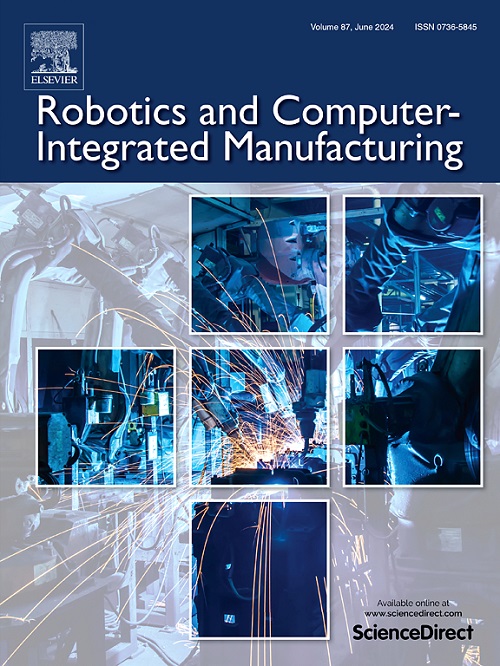Reinforcement Learning-based five-axis continuous inspection method for complex freeform surface
IF 9.1
1区 计算机科学
Q1 COMPUTER SCIENCE, INTERDISCIPLINARY APPLICATIONS
引用次数: 0
Abstract
Five-axis continuous inspection is an innovative technology that allows for the efficient and precise inspection of freeform surfaces. Traditional methods for planning the five-axis inspection path rely on manually defined objective functions, which are heavily dependent on the expertise of professionals and often result in suboptimal paths. To overcome these challenges, we have developed a Reinforcement Learning (RL)-based approach for generating inspection paths. This method replaces the explicit objective function with an RL model that incorporates comprehensive geometric metrics of inspection surface, resulting in a high-performing head trajectory for the five-axis inspection path. Additionally, we have introduced a beam search-based method to generate a set of optimal head trajectories that cover the entire inspection surface. Our proposed method enables the automatic generation of short and smooth inspection paths without human intervention. Physical inspection experiments conducted on a five-axis inspection machine have demonstrated that our approach significantly improves inspection efficiency and automation compared to traditional benchmarks.
基于强化学习的复杂自由曲面五轴连续检测方法
五轴连续检测是一项创新技术,可以有效和精确地检测自由曲面。传统的五轴检测路径规划方法依赖于手动定义的目标函数,这严重依赖于专业人员的专业知识,并且经常导致次优路径。为了克服这些挑战,我们开发了一种基于强化学习(RL)的方法来生成检查路径。该方法将显式目标函数替换为包含综合检测表面几何指标的RL模型,从而获得高性能的五轴检测路径头部轨迹。此外,我们还引入了一种基于光束搜索的方法来生成一组覆盖整个检测表面的最佳头部轨迹。我们提出的方法能够在没有人工干预的情况下自动生成短而平滑的检测路径。在五轴检测机上进行的物理检测实验表明,与传统基准相比,我们的方法显着提高了检测效率和自动化程度。
本文章由计算机程序翻译,如有差异,请以英文原文为准。
求助全文
约1分钟内获得全文
求助全文
来源期刊
CiteScore
24.10
自引率
13.50%
发文量
160
审稿时长
50 days
期刊介绍:
The journal, Robotics and Computer-Integrated Manufacturing, focuses on sharing research applications that contribute to the development of new or enhanced robotics, manufacturing technologies, and innovative manufacturing strategies that are relevant to industry. Papers that combine theory and experimental validation are preferred, while review papers on current robotics and manufacturing issues are also considered. However, papers on traditional machining processes, modeling and simulation, supply chain management, and resource optimization are generally not within the scope of the journal, as there are more appropriate journals for these topics. Similarly, papers that are overly theoretical or mathematical will be directed to other suitable journals. The journal welcomes original papers in areas such as industrial robotics, human-robot collaboration in manufacturing, cloud-based manufacturing, cyber-physical production systems, big data analytics in manufacturing, smart mechatronics, machine learning, adaptive and sustainable manufacturing, and other fields involving unique manufacturing technologies.

 求助内容:
求助内容: 应助结果提醒方式:
应助结果提醒方式:


